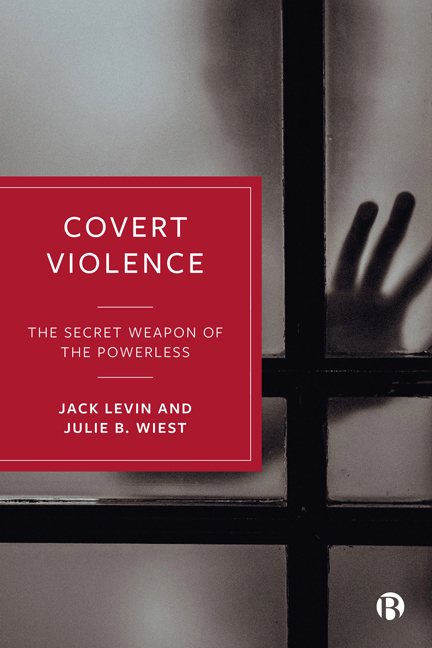Book contents
- Frontmatter
- Contents
- List of Figures and Tables
- About the Author
- Acknowledgments
- 1 An Introduction to Covert Violence, Power, and Social Institutions
- 2 Family and Close Relationships
- 3 Formal Education
- 4 The Workplace
- 5 Politics and Government
- 6 Healthcare
- 7 Mass Media
- 8 Shining Light on the Shadows
- Appendix: Case Summaries
- Index
8 - Shining Light on the Shadows
Published online by Cambridge University Press: 03 April 2024
- Frontmatter
- Contents
- List of Figures and Tables
- About the Author
- Acknowledgments
- 1 An Introduction to Covert Violence, Power, and Social Institutions
- 2 Family and Close Relationships
- 3 Formal Education
- 4 The Workplace
- 5 Politics and Government
- 6 Healthcare
- 7 Mass Media
- 8 Shining Light on the Shadows
- Appendix: Case Summaries
- Index
Summary
Preventing covert violence is perhaps even more difficult than preventing overt forms of criminal behavior. To a large degree, this is because the covert version is often harder to detect and/or is easily misunderstood as something else. Enough cases of presumed accidental deaths subsequently turn out to be murders that we can reasonably assume that many acts of covert violence are either never discovered or never identified as intentional.
Some incidents remain in an indefinite state of uncertainty within the minds of officials. The Pepsi and Tylenol cases in Chapter 4 are perfect examples, as each implicates customers and companies in plots that they may or may not have initiated. Similarly, the 2001 anthrax attacks in the aftermath of 9/11 continue to generate significantly divided opinions among experts and members of the public as to their origins, with some accusing prominent scientists or the 9/11 terrorists and others promoting conspiracy theories that involve images of a deep state within the U.S. federal government. If those infamous incidents were never officially solved, then it would not be surprising to find that many lower-profile cases are missed entirely.
Unlike unsolved cases, in which the action is recognized as malicious even if the identity of the perpetrator is unknown or ambiguous, undetected covert cases produce nothing that appears to need solving. Compared to maliciously inflicted injuries and deaths, those that are deemed accidental, due to natural causes, or self-inflicted generally require much less (if any) investigation and follow-up. And once an official classification has been made, there are virtually no mechanisms in place for routine reconsideration. It often takes years of persistence from a victim’s friend or family member to convince an authority figure to take another look, and frequently that suspicious person must uncover some kind of new evidence before they find anyone who will listen.
There are also practical reasons for not investigating a death when the manner and/or cause appears to be obvious. Determining the exact cause of a death requires available and sufficient funding, as well as other limited resources such as the time and expertise of physicians and/or other scientists.
- Type
- Chapter
- Information
- Covert ViolenceThe Secret Weapon of the Powerless, pp. 116 - 130Publisher: Bristol University PressPrint publication year: 2023

